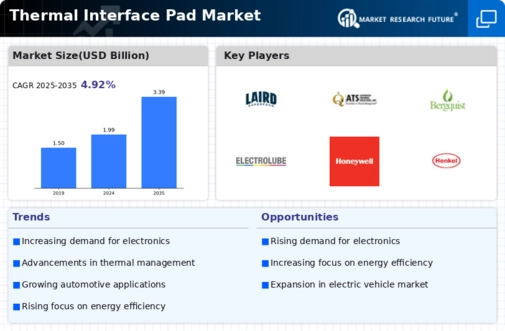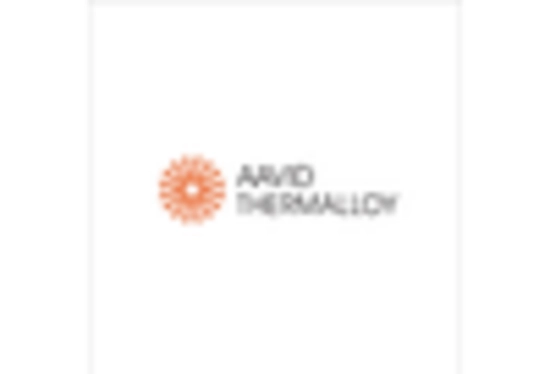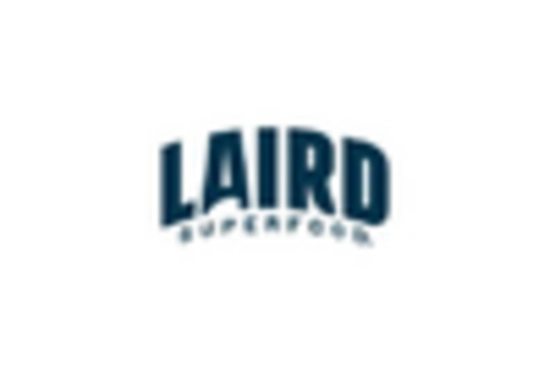Growth in Electric Vehicle Production
The Thermal Interface Pad Market is poised for growth as the production of electric vehicles (EVs) continues to rise. EVs require advanced thermal management systems to maintain battery efficiency and safety. Thermal interface pads play a crucial role in ensuring effective heat transfer between battery cells and cooling systems. As governments and manufacturers invest in EV technology, the demand for thermal interface pads is likely to increase. The market for thermal interface pads in the automotive sector is projected to grow at a compound annual growth rate of 8% through 2025, reflecting the industry's shift towards sustainable transportation solutions.
Advancements in Manufacturing Processes
The Thermal Interface Pad Market is influenced by advancements in manufacturing processes that enhance the performance and reliability of thermal interface materials. Innovations in production techniques, such as improved material formulations and precision application methods, are enabling manufacturers to create pads with superior thermal conductivity and durability. These advancements are likely to attract more industries to adopt thermal interface pads in their applications. As a result, the market is expected to witness a steady growth trajectory, with an estimated increase in market size by 6% annually through 2025, reflecting the ongoing evolution of manufacturing capabilities in the thermal management sector.
Expansion of Consumer Electronics Sector
The Thermal Interface Pad Market is benefiting from the expansion of the consumer electronics sector. With the proliferation of smartphones, tablets, and wearable devices, manufacturers are increasingly focusing on thermal management solutions to enhance device performance and longevity. The demand for high-performance thermal interface pads is expected to rise as companies strive to improve heat dissipation in compact designs. In 2025, the consumer electronics segment is anticipated to account for over 40% of the total thermal interface pad market, highlighting the critical role of these materials in modern electronic devices.
Increasing Electronics Cooling Requirements
The Thermal Interface Pad Market is experiencing a surge in demand due to the increasing cooling requirements of electronic devices. As technology advances, devices are becoming more compact and powerful, leading to higher heat generation. This trend necessitates efficient thermal management solutions to prevent overheating and ensure optimal performance. The market for thermal interface pads is projected to grow as manufacturers seek reliable materials that can effectively dissipate heat. In 2025, the market is expected to reach a valuation of approximately USD 1.5 billion, driven by the need for enhanced cooling solutions in consumer electronics, automotive applications, and industrial machinery.
Rising Adoption of Renewable Energy Technologies
The Thermal Interface Pad Market is likely to see growth due to the rising adoption of renewable energy technologies. Solar inverters and wind turbine systems require efficient thermal management to ensure reliability and performance. Thermal interface pads are essential in these applications, facilitating heat transfer and enhancing system efficiency. As investments in renewable energy continue to increase, the demand for thermal interface pads in this sector is expected to grow. By 2025, the renewable energy segment is projected to represent a significant share of the thermal interface pad market, driven by the global shift towards sustainable energy solutions.

















Leave a Comment